ROOM: The Space Journal is one of the major magazines on space exploration, technology and industry. At ROOM, we share a common dream – advancement of peaceful space exploration for the benefit of humankind, all while bringing you incisive articles on a plethora of contemporary topics. Our authors include academics and industry leaders from all over the world, which lets us bring you the newest and accurate information about kepler exoplanet search.
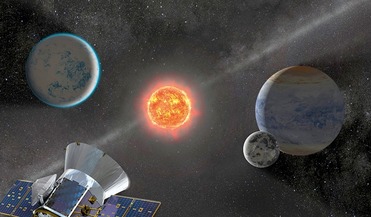 April 2019
Scanning the skies for exoplanets
April 2019
Scanning the skies for exoplanets
...rest of its days. Despite its bumper haul of new worlds, Kepler has really just scratched the surface in the search for Earth-like exoplanets and a true home-away-from-home still remains at large. ...of sky that will be 400 times larger than that covered by Kepler. Like Kepler, TESS will search for exoplanets by detecting the fractional dip in a star’s brightness as an orbiting exoplanet passes by, a technique known as the transit method. For every ...
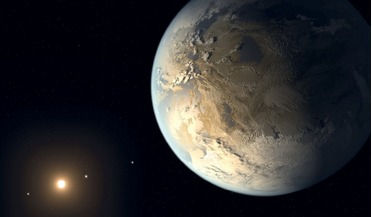 August 2018
Exoplanet census promises radical discoveries
August 2018
Exoplanet census promises radical discoveries
...a result, WFIRST is sensitive to analogues of all the solar system’s planets, except for Mercury, while Kepler has primarily studied planetary systems very different from our own. The sensitivity of the WFIRST microlensing...in a new era of astronomy, laying the groundwork for future telescopes designed to characterise Earth-like exoplanets and search for signs of life. About the authors N. Jeremy Kasdin is the Eugene Higgins Professor of Mechanical...
 11 December 2019
Water abundance lower than expected on exoplanets
11 December 2019
Water abundance lower than expected on exoplanets
...solar system, an international team led by researchers at the University of Cambridge, UK, examined atmospheric data from 19 exoplanets that span a large range in size - from 'mini-Neptunes' of nearly 10 Earth masses to 'super-... Madhusudhan from the Institute of Astronomy at Cambridge, who first measured low water vapour abundances in giant exoplanets five years ago. “It is incredible to see such low water abundances in the atmospheres of a ...
 November 2018
How many people does it take to colonise an exoplanet?
November 2018
How many people does it take to colonise an exoplanet?
... Located at 4.2 light years (40,000 billion km), Proxima Centauri b is almost an ideal destination - as far as exoplanets go. But while this distance may be small by astronomical standards, it remains utterly vast on the human scale. The...not a strict, definitive number for colonisation projects. Artist’s concept of the surface of TRAPPIST-1f, an exoplanet about 40 light years from Earth. Cows in space? Sending a ship laden with frozen embryos ...
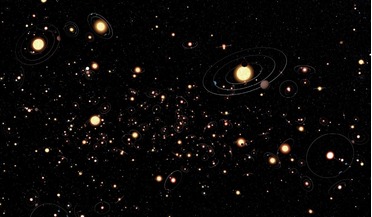 May 2018
PLATO the habitable zone explorer
May 2018
PLATO the habitable zone explorer
...surveys, as well as the space missions CoRoT, Kepler, and K2. NASA’s upcoming Transiting Exoplanet Survey Satellite (TESS) due for launch this year, will also search for transits of exoplanets ranging from Earth-sized to gas giants around...are they suitable for life? PLATO is a single-spacecraft, multiple telescope mission that will search for exoplanet transits around thousands of bright stars. The original concept for the mission goes back more ...
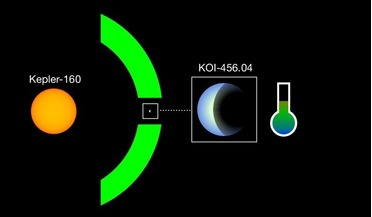 05 June 2020
Exciting exoplanet find around sun-like star
05 June 2020
Exciting exoplanet find around sun-like star
...not new. It was discovered around ten years ago, followed by the confirmation of two exoplanets, called Kepler-160b and Kepler-160c, four years later. Both of these planets though are substantially bigger than Earth and...- a usual telltale sign that a planet is orbiting a star. “Our improvement is particularly important in the search for small, Earth-sized planets”, Heller explains. “The planetary signal is so faint that it’s almost entirely hidden...
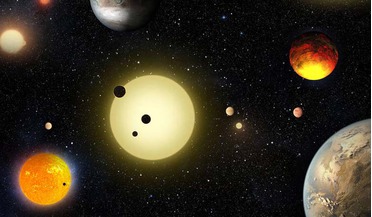 11 May 2016
Kepler scientists announce a major increase in confirmed exoplanet numbers
11 May 2016
Kepler scientists announce a major increase in confirmed exoplanet numbers
... to trawl through it has been imperative to find a quicker solution and narrow down the search for true exoplanet signals. Batalha explains that Kepler achieves this by using statistics to sample the Galaxy to help understand how many planets...
 24 November 2021
Astronomers discover more than 350 possible new exoplanets
24 November 2021
Astronomers discover more than 350 possible new exoplanets
...near the habitable zone of Sun-like stars, to searching around smaller, dimmer red dwarf stars instead. Dubbed K2, this “Second Light" mission lasted as long as Kepler’s first exoplanet hunt and bumped its count of surveyed stars up...about once per month – is still being examined for signs of potential habitable exoplanets. However, because of the problems Kepler experienced, scientists have not been able to use the same automated processes used to...
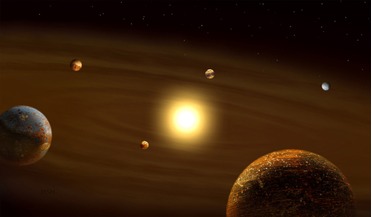 27 July 2019
Hundreds of new planet candidates detected by Kepler
27 July 2019
Hundreds of new planet candidates detected by Kepler
... planets around main sequence stars like our sun as it was designed to, it was proposed that Kepler search for habitable worlds around smaller, dimmer red dwarfs in a different direction to which it had been...title – K2 – and 15 months after being reassigned to its new stellar target, Kepler had racked up its 1,000th confirmed exoplanet discovery. Kepler’s K2 mission comprised of 19 ‘campaigns,’ lasting around 80 days each. These new discoveries...